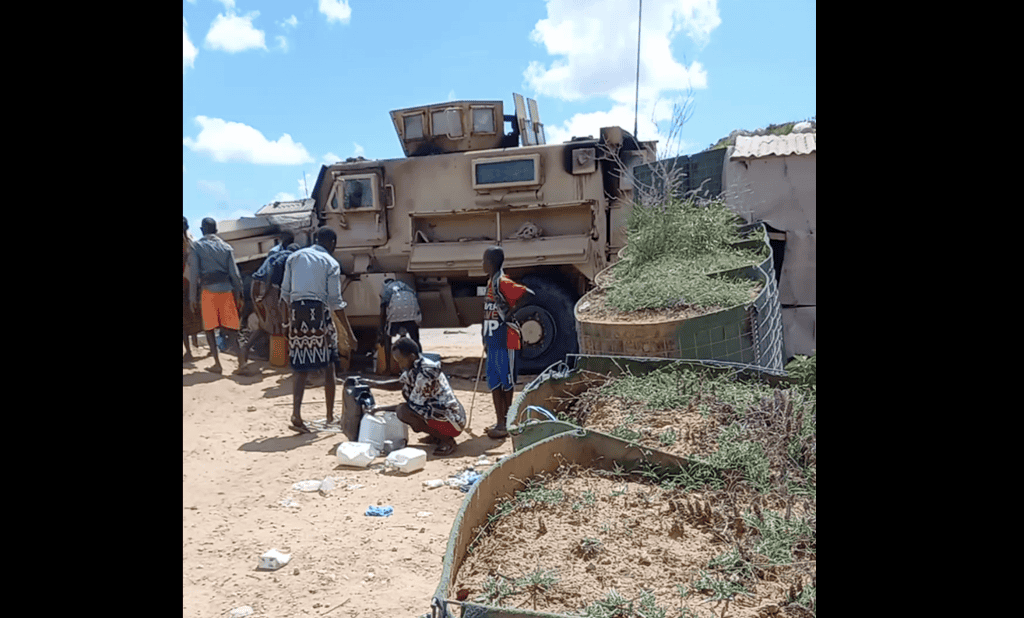
Earlier today, Shabaab, al Qaeda’s branch in East Africa, launched a suicide assault against an African Union (AU) military base in the area of Ceel Baraf in the Middle Shabelle region. The Forward Operating Base (FOB) was manned by AU Transition Mission in Somalia (ATMIS) forces from Burundi.
Exact casualty figures have varied. Local witnesses have stated that three civilians were killed in the crossfire. Meanwhile, Shabaab initially stated its men killed at least 59 Burundian troops before raising this total to 173.
FDD’s Long War Journal cannot independently confirm any casualty figures given by Shabaab or local press. Somali officials reported Burundian troops repulsed the attack, though Voice of America, citing other Somali officials, stated that Shabaab indeed overran the military base.
According to local reports and later confirmed by Shabaab, the jihadist group began the assault with a large suicide car bomb (or vehicle borne improvised explosive device, VBIED) before gunmen then entered the fray. This is a common tactic utilized by Shabaab both against military and civilian targets.
The base, which sits just outside of Ceel Baraf approximately 130 km north of Mogadishu, was being prepared to be handed over to the Somali National Army (SNA). After the brutal firefight, Shabaab apparently managed to wrest control over the compound from the Burundian troops.
Unofficial videos propagated by Shabaab appear to show the base completely abandoned, with civilians pillaging supplies as well as fuel from abandoned armored vehicles.
In a brief statement released by its Shahada News Agency, Shabaab claims to have killed at least 173 AU troops in the assault while capturing an unspecified number of the survivors as prisoners. This number cannot be independently verified. However, photos released by the group show at least 12 dead Burundian soldiers inside the base.
Given the scale of the assault, as well as the subsequent complete abandonment of the compound, the losses to Burundian forces were likely substantial. Additional statements released by Shabaab imply that many Burundian troops fled the base, as Shabaab’s leadership has given permission for local residents to track down fleeing troops.
Currently, neither the African Union nor the Burundian government have commented on the assault. Following similar large-scale incidents in the past, the AU has taken several days to officially comment on the assaults as it collects information.
If the large number of Burundian troops is confirmed, this assault will have been the largest against African Union troops since the 2016 raid at El-Adde in Somalia’s southern Gedo region. That suicide assault left between 141 and 200 Kenyan troops dead. Kenya has rejected these numbers, however.
Similarly in Jan. 2017, Kenya lost an additional 68 troops in another large suicide assault conducted by Shabaab against one of Kenya’s bases in southern Somalia. And in Aug. 2018, at least 46 Ugandan troops were killed by Shabaab in a suicide assault involving two car bombs on an AU base in Lower Shabelle.
Despite some setbacks in recent years, Shabaab continues to be one of al Qaeda’s most effective branches. It maintains significant control over much of southern Somalia and retains the ability to strike in Mogadishu, Kenya, where it also controls territory, and against heavily fortified bases in both Somalia and Kenya.
Though its fortunes have ebbed and flowed over the past decade, it has weathered numerous offensives from an array of local, regional, and international actors, including the United States.







